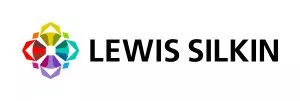- with readers working within the Property industries
- within Cannabis & Hemp, Law Practice Management and Criminal Law topic(s)
Although many organisations take steps to promote ethical business practices and have policies to protect workers from being exploited, so-called "modern slavery" remains a global problem. The Modern Slavery Act requires large organisations to publish an annual statement setting out the steps they have taken to prevent modern slavery in their organisation and their supply chains.
This Inbrief looks at these requirements and the steps organisations need to take to comply.
The Modern Slavery Act 2015
According to estimates by the International Labour Organization, 49.6 million people around the world are in a form of modern slavery, with 27.6 million (including 3.3 million children) in forced labour.
This is not merely of academic interest in the UK. The globalisation of the economy means that goods and services bought here may have a long and tangled supply chain encompassing multiple countries, including countries where bonded or forced labour is common. Modern slavery exists in the UK too and can involve UK citizens, as well as foreign nationals.
The government's view is that tackling modern slavery not only protects vulnerable workers but can also bring a number of business benefits:
- protecting and enhancing an organisation's reputation and brand
- protecting and growing its customer base
- improved stakeholder and investor confidence and trust
- uncovering and mitigating hidden risks
- greater staff productivity, retention and loyalty (and reduced sick leave)
- reduced number of grievances and more stable industrial relations
- developing more responsive, stable and innovative supply chains
- enhanced ability to win public sector contracts and avoid exclusion from tenders or trade agreements
- lower insurance premiums and improved access to insurance
Under the Modern Slavery Act 2015 (MSA), the term "modern slavery" is used to cover both offences in the MSA (slavery, servitude and forced or compulsory labour) and human trafficking.
The MSA addresses the issue of modern slavery in a number of ways, including consolidating offences for slavery and human trafficking and establishing an Independent Anti-Slavery Commissioner. But for employers the pertinent requirement is section 54, which requires large businesses to publish an annual slavery and human trafficking statement.
The slavery and human trafficking statement
The statement must set out the steps the organisation has taken to ensure slavery and human trafficking is not taking place in its supply chain or its own business (or it must state that it has not taken any steps). The statement must be approved by senior management and published on the organisation's website.
In March 2025, the government published updated statutory Guidance on transparency in supply chains (Transparency in supply chains (TISC) – statutory guidance) which is designed to provide practical assistance for organisations to comply with their obligations.
Although there is no definition of "supply chain" in the MSA, the updated Guidance clarifies that the term should be interpreted broadly to encompass both the primary value chain (the goods and services an organisation sells or delivers) and the secondary value chain (supporting activities such as HR, catering, and cleaning), as well as the labour supply chain (how and from where workers are recruited at all stages). The Guidance emphasises that organisations should seek to map and understand their supply chains as fully as possible, including both direct ("tier 1") and indirect ("tier 2") suppliers, and to improve transparency year-on-year.
The Guidance provides practical examples and case studies from a range of sectors, illustrating good and best practice in identifying and addressing modern slavery risks which go beyond relying solely on audits. These include organisations:
- mapping supply chains beyond tier 1 (to examine more suppliers and gain a deeper understanding of their supply chain)
- engaging and collaborating with external stakeholders (such as NGOs and trade unions)
- worker voice and grievance mechanisms
- responsible recruitment and purchasing practices
- effective remediation and continuous improvement
- integration of modern slavery risk management into governance.
The government encourages all organisations to develop an "appropriate and effective response" to modern slavery, to go beyond the minimum legal requirements (including participating in the voluntary government-run modern slavery statement registry), and to be transparent about their actions.
Who must publish a statement?
Under section 54, "commercial organisations" (meaning companies and partnerships, wherever formed or incorporated) must publish a statement if they supply goods or services and have an annual turnover over a minimum threshold – currently set at £36 million. The organisation must be carrying on all or part of its business in the UK to be caught, but the relevant turnover is global turnover, and includes the turnover of any subsidiaries as well as the organisation itself. Even if an organisation pursues primarily charitable or educational aims or purely public functions, provided it engages in commercial activities and meets the minimum threshold, it will have to produce a statement.
If any organisation in any part of a group structure meets these requirements, it is legally required to produce a statement.
Where a parent and one or more subsidiaries in the same group are required to produce a statement, the parent may produce one statement that subsidiaries can use to meet this requirement (provided the statement fully covers the steps that each of the entities have taken in the financial year in question). The group statement should clearly name all entities it covers, and should be published on the UK websites of each organisation included in the statement.
While businesses will only have to publish a statement for each financial year in which their turnover exceeds £36million, the government strongly recommends that organisations who have produced statements in one financial year continue to produce statements in subsequent years, even when they are not required to do so by law (for example, if their turnover falls below the minimum threshold). Its view is that organisations will be able to build on statements year on year, track progress over time, and show the public, consumers and investors that they are being transparent and embracing the spirit of the anti-slavery legislation.
Even if the legislation does not apply to an organisation, the Guidance encourages all businesses to be open and transparent about their recruitment practices, policies and procedures in relation to modern slavery by producing a statement voluntarily. Smaller organisations may find this necessary in order to manage requests from those they are supplying goods and services to, particularly if they are bidding for contracts with large businesses with a turnover of more than £36million.
When must the statements be published?
Although there is no prescribed time limit, the Guidance states that organisations should publish their statements as soon as possible after their financial year end to which the statement relates and that this should be, at most, six months from the organisation's financial year end.
What information should be in the statement?
The statement must include the steps the organisation has taken during the financial year to ensure that slavery and human trafficking are not taking place in any of its supply chains or in any part of its own business.
Alternatively, an organisation could state that no such steps have been taken (although, particularly for high profile, public-facing organisations, this is unlikely to be very attractive even if legally compliant).
The statement should be written in simple language, be easily accessible to everyone and provided in English as well as other languages which are relevant to the business and supply chains in question.
While the MSA does not prescribe the precise content or structure of a statement, it provides a list of suggested topics and the latest statutory Guidance expands on what organisations are encouraged to include under each:
- the organisation's structure, its business and supply chains
- its organisational policies in relation to slavery and human trafficking
- due diligence processes (including remediation)
- assessing and managing risk
- monitoring and evaluation (including KPIs and success stories)
- staff and supplier training
While the MSA does not stipulate a required form or length, the
Guidance states that the statement should aim to include the above
information and that organisations should paint a detailed picture
of the steps taken to address and remedy modern slavery, and the
effectiveness of all such steps. Statements may draw on material
from other reports or policies where relevant, and may include
links to these documents.
The Guidance encourages organisations to build on their statements
year-on-year, demonstrating continuous improvement and increased
transparency.
It distinguishes between "level 1" (good practice) and
"level 2" (best practice) disclosures; level 2
disclosures involve an extra layer of more comprehensive actions
that must be undertaken in addition to those required for level 1,
thus encouraging organisations to progress over time. The Guidance
ties each of the above six disclosure areas closely to two
international frameworks: the OECD Guidelines and the UNGPs.
Approval and publication of the statement
The Guidance stresses the importance of an organisation's top management in taking the lead in fostering a culture where modern slavery is not tolerated in any form.
The statement must be signed off by a senior person. Who this is depends on the type of organisation. If the organisation is a company, the statement must be approved by the board of directors and signed by a director. If it is a limited liability partnership, the statement must be approved by the members and signed by a designated member. For other types of partnership, it must be signed by a partner. It is best practice for the statement to include the date on which the board or members approved the statement.
The statement must be published on the organisation's website, if it has one, and there must be a prominent link to it from the homepage. The Guidance suggests that a link with the title "Modern Slavery Act Transparency Statement" should be used so the content is clear to the reader. A prominent place may include a direct link on the homepage or within an obvious drop-down menu.
The Guidance recommends that organisations which have more than one website should put the statement on the most appropriate website relating to the organisation's business in the UK. If there is more than one relevant website, organisations should put a copy of the statement or link to the statement on each website. If an organisation does not have a website, it must send a copy of the statement to anyone requesting it within 30 days.
Given the emphasis on building on progress year on year, the Guidance suggests that organisations should look to keep historic statements from previous years available online when new statements are published to enable the public to compare statements between years and monitor progress of the organisation over time.
The government has set up a modern slavery statement registry, which summarises statements on a publicly accessible website with links to the relevant organisation's website. Organisations can add their statements to this registry. This is currently voluntary, although there are proposals to make this mandatory (see below).
Failure to publish a statement
There are limited enforcement provisions for organisations which fail to comply with section 54 of the MSA. If an organisation fails to publish a statement, the Secretary of State can in theory get an injunction (or, in Scotland, an order for specific performance) requiring compliance; failure to comply with such a court order can result in an unlimited fine for contempt of court. However, there are no automatic financial penalties for non-compliance in the first instance. The real motivator is likely to be the risk of reputational damage.
In theory, an organisation could simply publish a "no steps taken" statement. While this would comply with the law, this approach is strongly discouraged in the Guidance and the public relations fallout could be significant. Campaigners and NGOs are likely to "name and shame" any culprits and it is possible that so-called "ethical investment" funds would not invest in such organisations. The government's intent is that consumers, investors and NGOs will engage and apply pressure where they believe businesses have not taken appropriate steps.
Businesses in some sectors may need to put considerable time and resources into identifying and taking steps to investigate and prevent slavery in their supply chain and producing a statement which does not put them at risk of stakeholder disapproval, critical media attention and activist campaigning. This applies particularly to those with complex supply chains which operate in high risk-sectors, such as agriculture, fishing, food production, clothing and consumer goods manufacture and mining.
Recommended steps
Organisations to which the obligation to provide a statement applies should consider:
- Who is responsible? A team from different business areas may be needed.
- What action is the organisation taking already in relation to modern slavery? For example, there may already be a modern slavery policy, corporate social responsibility initiatives, or corporate disclosure about human rights issues. Identify any gaps.
- What risk assessments of the business and its supply chains are needed to determine which areas are most at risk of slavery and human trafficking?
- Who are the relevant suppliers and what are they doing to ensure there is no slavery or trafficking in their business (or their suppliers' businesses)?
- Whether contractual terms with suppliers contain provisions drafted with a view to ensuring there is no slavery in the supply chain? Do the terms deal with the issue explicitly? Is there sufficient control over subcontracting to ensure the organisation knows who subcontractors are and that they are not involved in slavery or human trafficking?
- Whether the organisation conducts business with suppliers in a way that might create higher risk (e.g. putting severe downward pressure on prices or delivery times which encourages them to subcontract to other suppliers)?
- Whether and how they want to monitor suppliers, particularly if they operate in another country (e.g. self-reporting, auditing and/or spot checks)? What is appropriate will depend upon the risks.
- What training should be offered and to whom (e.g. procurement managers, supply-chain managers, the board of directors).
- What should be included in the slavery and human trafficking statement and how it should be implemented. Consider which parts of the business may need to input into it or review it (e.g. senior management, business functions, HR, Marketing/PR).
Even if the legislation does not apply to an organisation, consideration should be given to voluntarily producing a statement and taking steps to demonstrate openness and transparency in tackling modern slavery.
Potential future developments
Following a Home Office consultation in 2019, the government proposed a Modern Slavery Bill which would make a number of key changes to the MSA, including financial penalties for non-compliance, mandatory statement content, a single reporting deadline, and mandatory publishing of statements to the government-run registry. This was included in the May 2022 Queen's Speech, but not progressed. In October 2024, the House of Lords Select Committee on the MSA published a report urging the government to revisit and strengthen the Bill. However, to date Parliament is yet to progress it.
The content of this article is intended to provide a general guide to the subject matter. Specialist advice should be sought about your specific circumstances.




